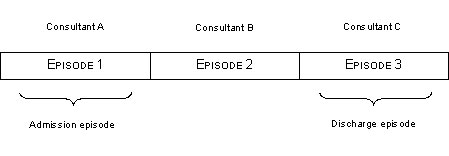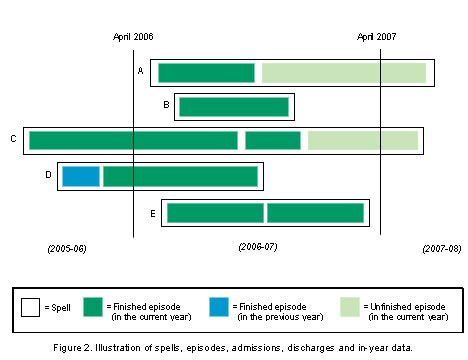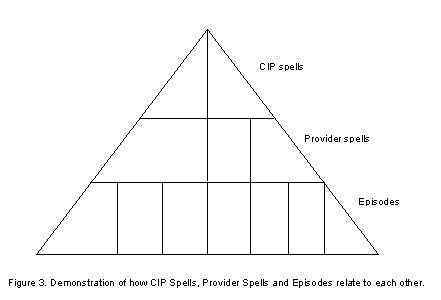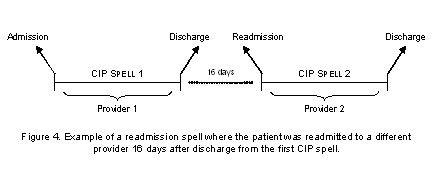IN THIS SITE...
How do you spell that?
When it comes to using hospital data, (particularly when you are familiar with 'episodes') 'spells' can be confusing. There are many different types of spells, all measured in different ways and used for different things. This document explains some of the more common types of spell.
Episodes and spells
The Healthcare Commission defines an episode as a single period of care under one consultant, eg treatment of Patient A in hospital by Consultant A for a broken leg.
 |
In general, a patient's entire stay in hospital is a spell. A spell can contain one episode, as with Patient A in the example above, or several episodes. For example, if Patient A, while still in hospital, was diagnosed and treated for diabetes by Consultant B, there would be two episodes (one for the broken leg and Consultant A, and one for diabetes and Consultant B). If the patient is transferred to another hospital, dies or is discharged, the episode and the spell end. The vast majority of spells however, contain only one episode.
Examples of episodes and spells
The association between spells and episodes is illustrated in figure 2 (below); the box that surrounds an episode/episodes is a spell. In the example, 10 episodes make up the five spells. Spell B is a single episode spell, while spells A, D and E contain two episodes each. Spell C contains three episodes.
 |
Spelling out the difference
There are two types of spells - Provider and Continuous In-Patient (CIP). The main differences between the two are outlined in the following sections.
Provider spell
A Provider spell (sometimes called the hospital provider spell) is the time that a patient stays in one hospital provider, for example, from admission to discharge. The patient will be using a bed that is managed by one health care provider, and they may be treated by one or more consultants.
The provider spell starts when a decision has been made to admit the patient, and a consultant has taken responsibility for their care. The spell ends when the patient dies or is discharged from hospital. When a patient is transferred from one hospital provider to another, they are discharged from the first and admitted to the second. This shift in responsibility commands the commencement of a new spell following the transfer. It is important to note however, that if a patient is moved between hospitals or sites within the same hospital provider, the spell continues.
Analysis of different provider spelling methods was undertaken by the NHS Information Centre. The analysis, accessible through the link below, considers the different approaches and makes a recommendation for the preferred method:
Continuous inpatient (CIP) spell
A continuous inpatient (CIP) spell is a continuous period of care within the NHS from admission to discharge, regardless of any transfers which may take place. It can therefore be made up of one or more episodes and/or involve more than one hospital provider.
A CIP spell starts when a decision has been made to admit the patient, and a consultant has taken responsibility for their care. The spell ends when the patient dies or is discharged from hospital.
There is a hierarchical structure to spells and episodes. One CIP spell contains one or more Provider spells. One Provider spells contains one or more episodes. Most of the time, each CIP spell has only one Provider spell and one episode. This can be seen in Figure 3.
 |
CIP spells are used for readmissions analysis. A readmission spell is when a patient who has been treated and discharged from a hospital is admitted to any hospital in England, usually as an emergency within a certain number of days. For example, the most commonly used readmission measure is emergency readmissions to hospital within 28 days of discharge.
 |
A readmission spell starts when a decision has been made to admit the patient within a certain number of days of discharge from hospital. The spell ends when the patient dies or is discharged from hospital. (You should note that the readmission will not necessarily relate to the previous hospital treatment.)


